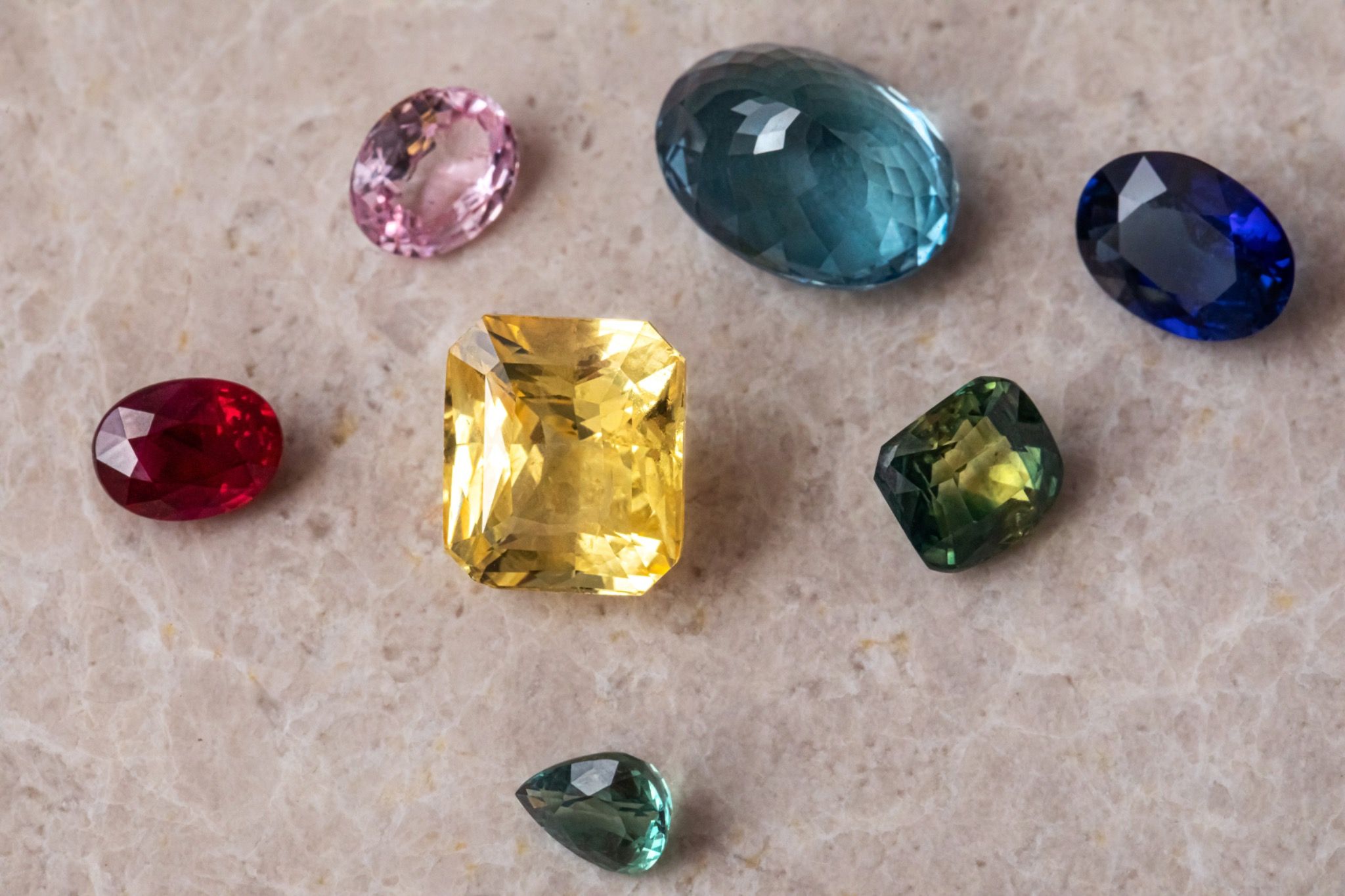
10 Feb 2025 — by Flawless Fine Jewellery — Reading time 3 minutes
How to Spot a Fake Gemstone : A Beginner’s Guide
The Knowledge You Need To Find Your Perfect Gemstone
How to Spot a Fake Gemstone : A Beginner’s Guide
Identifying genuine gemstones can be a daunting task, especially for beginners unfamiliar with the intricate world of gemmology. With counterfeit gemstones becoming increasingly sophisticated, it’s easy to be misled by clever imitations that mimic the appearance of natural gems. Whether you’re shopping for jewellery, starting a collection, or simply curious, understanding the basics of how to distinguish real gemstones from fakes can save you from costly mistakes. In this guide, we’ll explore practical tips and techniques to help you confidently evaluate gemstones and ensure you’re getting what you pay for.
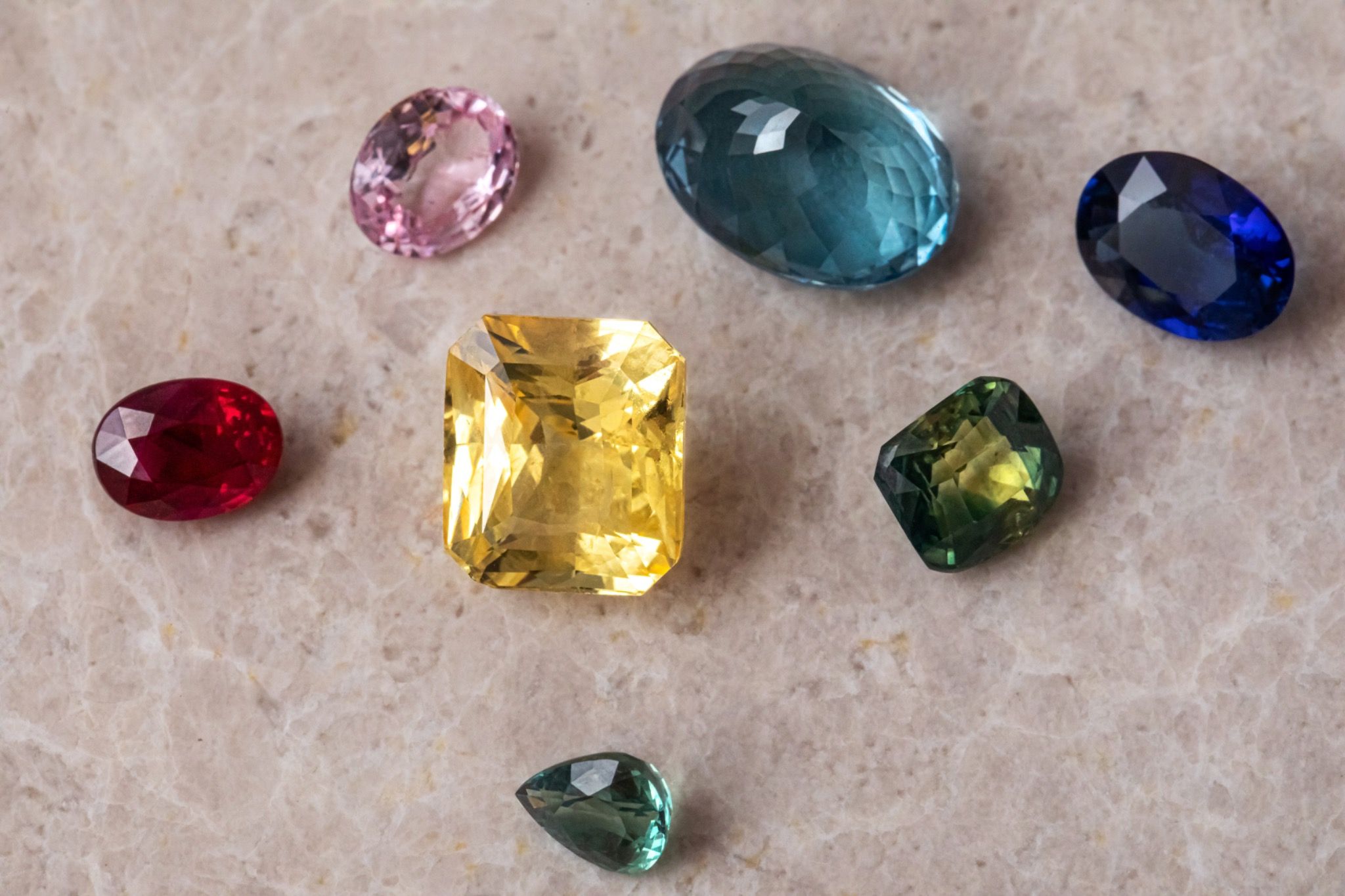
Topics covered:
Types of Gemstones
Natural Gemstones: These are formed through natural geological processes over millions of years. They are often mined from the earth and may contain imperfections or inclusions, which can serve as indicators of their authenticity. Natural gemstones are rare and highly valued for their unique characteristics.
Synthetic Gemstones: These are created in laboratories using advanced technology to replicate the chemical, physical, and optical properties of natural gemstones. While they are not naturally occurring, synthetic gems are genuine in composition and can be difficult to distinguish without professional tools.
Imitation Gemstones: Made from inexpensive materials such as glass, plastic, or composite substances, these are designed to imitate the appearance of natural gemstones. They lack the chemical and structural properties of real gems, making them less valuable and less durable.

Key Characteristics of Genuine Gemstones
Colour: Genuine gemstones often display vibrant, natural hues with subtle variations. Their color is usually consistent but not overly perfect or artificial-looking.
Clarity: While some high-quality gems are nearly flawless, most natural gemstones have minor inclusions or imperfections that indicate their authenticity.
Hardness: Authentic gemstones have specific hardness levels, measured on the Mohs scale. For example, diamonds rank at 10, making them highly resistant to scratches, whereas softer fakes will show wear.
Weight: Real gemstones are typically denser and heavier than imitations made from glass or plastic. A fake gem may feel lighter than expected for its size.
Cut: Genuine gems are skillfully cut to enhance their natural beauty and brilliance. Poor symmetry or overly perfect shapes might indicate a fake or low-quality gem.
Refractive Index: Authentic gemstones refract light in unique ways, giving them a distinct sparkle or “fire.” Synthetic or imitation gems may lack this characteristic.
Temperature: Real gemstones often feel cool to the touch and take time to warm up, unlike plastic or glass imitations that quickly match the surrounding temperature.
Common Techniques to Spot a Fake Gemstone
Check for Inclusions: Use a magnifying glass or loupe to examine the stone. Natural gemstones often have tiny imperfections or inclusions, while synthetic and fake stones may appear flawless.
Assess the Weight: Hold the gemstone in your hand. Genuine gemstones are denser and heavier compared to imitations made from glass or plastic.
Inspect the Sparkle: Genuine stones have a unique brilliance due to their refractive index. Fake stones often lack depth in their sparkle and may appear dull or overly shiny.
Perform the Scratch Test: Test the gemstone’s hardness using a simple scratch test on a surface like glass. For instance, a diamond (hardness 10) should easily scratch glass, while softer fakes will not.
Look for Color Variations: Natural gems often exhibit slight color variations due to their formation process. Fake gems tend to have uniform and overly vibrant colors.
Feel the Temperature: Real gemstones feel cool to the touch and take time to warm in your hand. Glass and plastic imitations warm up quickly.
Ask for Certifications: Always request a gemological certificate from a reputable authority. This document verifies the authenticity, quality, and origin of the gemstone.
Test Under UV Light: Some gemstones, like diamonds, fluoresce under UV light. This reaction can help distinguish genuine stones from fakes, although it is not foolproof.
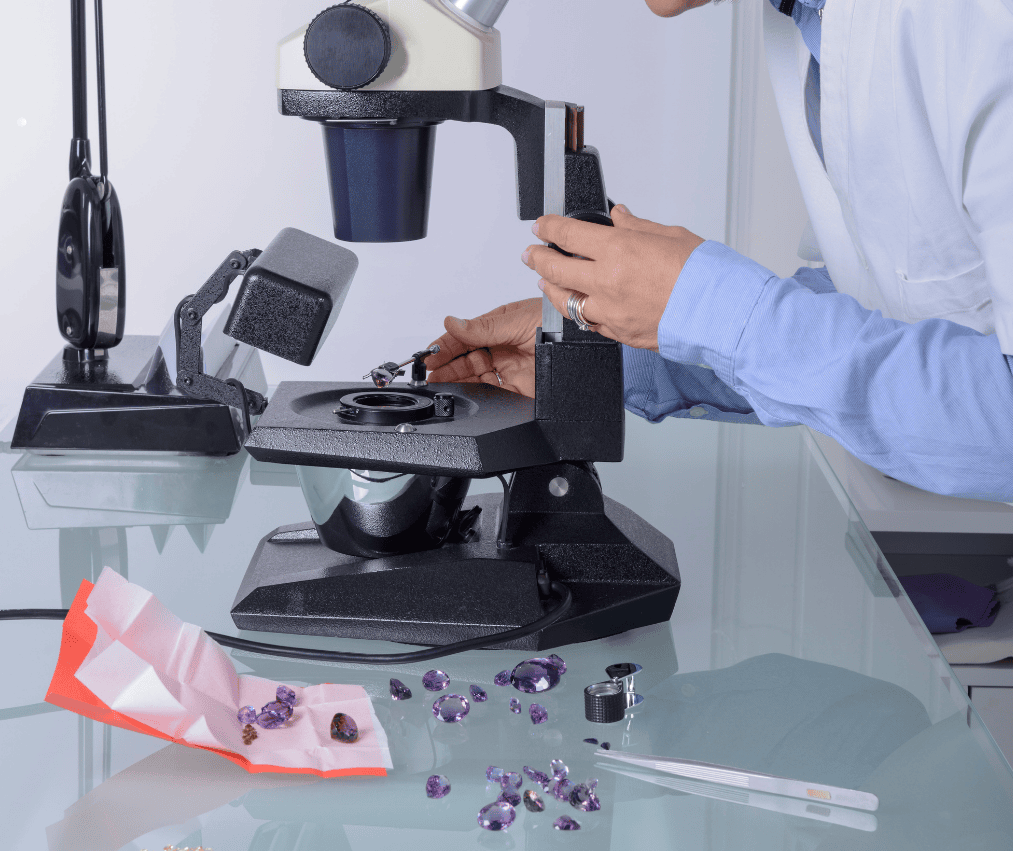
Tools for Gemstone Identification
Magnifying Glass or Jeweler’s Loupe: A 10x magnification loupe helps identify inclusions, flaws, and surface details that can indicate whether a
gemstone is natural or fake.
Refractometer: Measures the refractive index of a gemstone, which is unique to each type. It helps distinguish between real and synthetic stones.
Hardness Test Kit: Consists of tools to test a gemstone’s hardness on the Mohs scale, helping to verify its identity and rule out imitations.
UV Light: A UV lamp can reveal fluorescence, a property exhibited by some genuine gemstones, like diamonds, but absent in most fakes.
Gemstone Identification Chart: A reference guide that provides key characteristics such as refractive indices, specific gravities, and common inclusions for different gems.
Digital Scale: Measures the gemstone’s weight, which can help differentiate between denser real gems and lighter imitations made from plastic or glass.
Polarising Filter: Used to analyze a gemstone’s optical properties, such as birefringence, which is unique to certain natural gems.
Microscope: Provides a detailed view of a gemstone’s internal features, helping to identify inclusions or structural patterns specific to natural
stones.
Spectroscope: Analyses how a gemstone absorbs light, producing a spectrum that can help confirm its identity.
Thermal Conductivity Tester: Used to test the heat conductivity of gemstones like diamonds, which conduct heat much better than imitations.
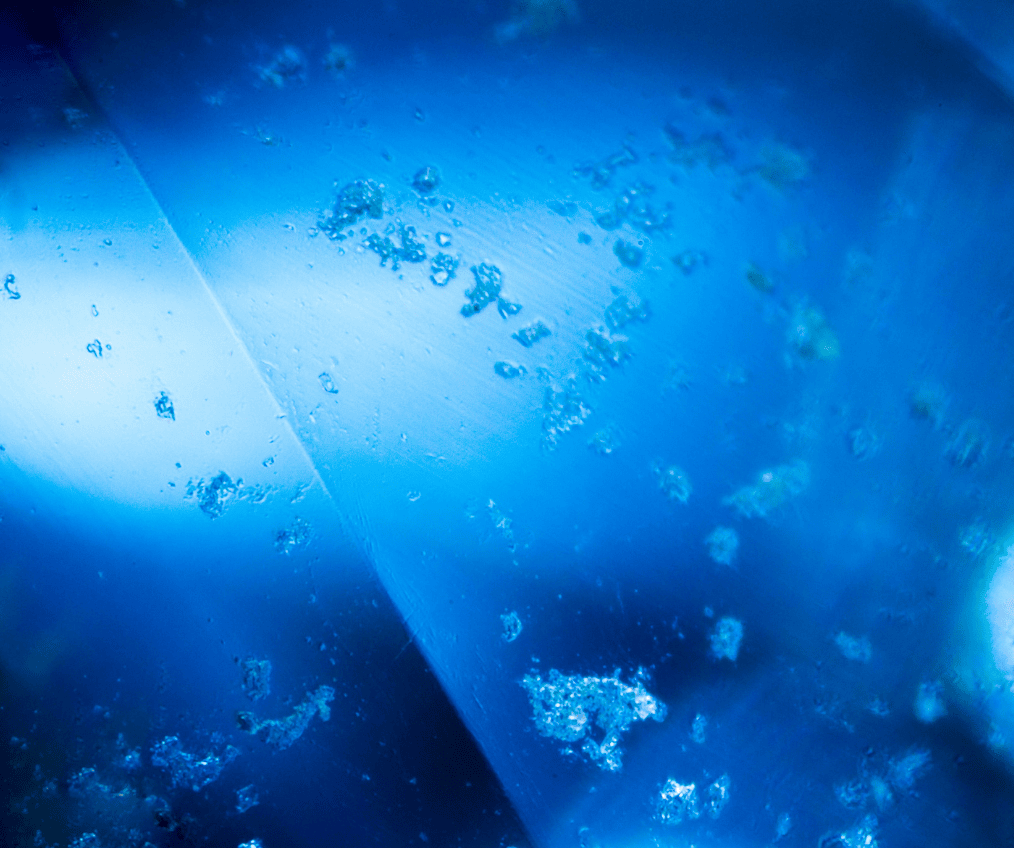
Professional Help for Gemstone Identification
Certified Gemologists: Seek the expertise of certified gemologists who are trained to identify gemstones accurately using advanced tools and techniques. They can provide detailed assessments and certificates of authenticity.
Gemological Laboratories: Trusted labs like GIA (Gemological Institute of America) and IGI (International Gemological Institute) offer professional testing and certification services. Their detailed reports verify a gemstone’s authenticity, quality, and origin.
Reputable Jewellers: Experienced jewellers with a solid reputation can often identify gemstones and provide valuable insights. Ensure they are accredited by recognized organizations, such as the American Gem Society (AGS).
Appraisers: Professional gem and jewellery appraisers can determine the gemstone’s authenticity and value. Look for appraisers who are members of organisations like the National Association of Jewellery Appraisers (NAJA).
Specialised Equipment: Professionals use advanced tools such as spectrometers, microscopes, and thermal testers that go beyond what is available to the average buyer, ensuring precise identification. Second Opinions: If in doubt, consider consulting multiple experts to cross-check their evaluations and avoid misjudgment or fraud.
Red Flags to Watch Out For
Too Perfect Appearance: Genuine gemstones often have natural imperfections or inclusions. Flawless gems at a low price are likely synthetic or fake.
Unrealistic Prices: If the price seems too good to be true, it probably is. Genuine gemstones are rarely sold at significant discounts.
Uniform Color: Natural gemstones usually exhibit slight color variations, while fake or synthetic stones often have overly uniform and vibrant colors.
No Certification: Reputable sellers provide gemological certificates to verify a gemstone’s authenticity. Lack of documentation is a red flag.
Lightweight Feel: Fake gemstones made from materials like glass or plastic are lighter than genuine stones of the same size.
Opaque Surface: Genuine gemstones typically have a distinct clarity and transparency. Fakes often appear dull or overly cloudy.
Incorrect Settings: High-quality gemstones are rarely set in cheap or poorly crafted jewelry. Low-grade settings can indicate a fake.
Inconsistent Sparkle: Authentic gemstones refract light uniquely, creating natural brilliance. Fake gems may lack depth in their sparkle or appear overly shiny.
Seller’s Reputation: Buying from unknown or unverified sellers increases the risk of encountering fake gemstones. Always check for reviews or certifications.
Pushy Sales Tactics: Sellers pressuring you to make a quick purchase or refusing to answer questions about authenticity may be hiding something.
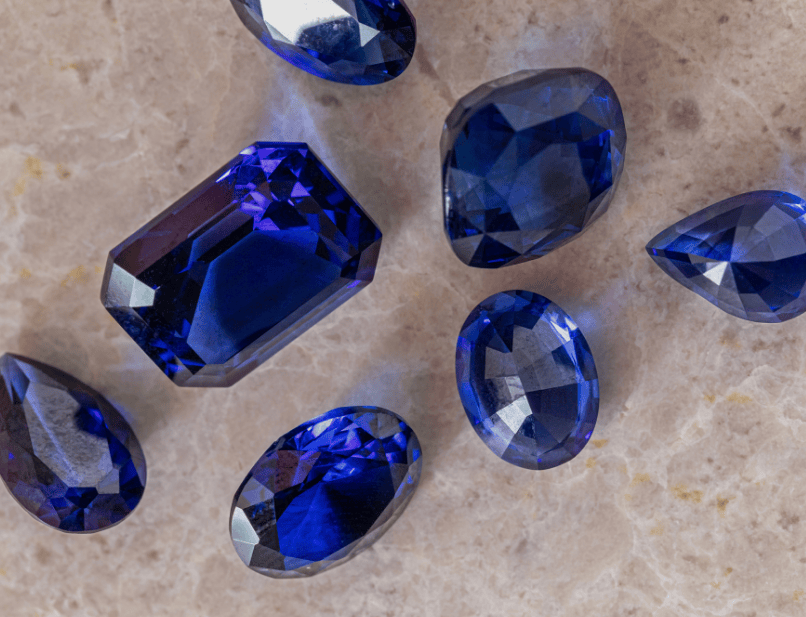
Case Studies and Examples
The Glass Emerald Case: A shopper purchased a bright green “emerald” at a fraction of its usual price. Upon inspection with a loupe, tiny air bubbles were discovered inside the stone—characteristic of glass imitations. Unlike natural emeralds, which typically show inclusions like fissures or mineral deposits, the stone was flawless and uniform in colour.
The Synthetic Ruby Incident: A jeweller sold a ruby labeled “natural” at a premium price. A refractometer test revealed its refractive index matched that of a synthetic ruby. Under magnification, curved growth lines —a hallmark of flame-fusion synthesis—were observed, confirming it was lab-created.
Amber or Plastic?: A collector bought a piece of amber from a flea market. To test its authenticity, the hot needle test was used. When gently heated, the item emitted a plastic odor rather than the pine-like scent genuine amber produces. Its unusually light weight further confirmed it was plastic.
The Dyed Turquoise Dilemma: A turquoise necklace turned out to be dyed howlite, a much cheaper material. A scratch test on an inconspicuous area revealed white material underneath the surface, indicating it was artificially dyed to mimic turquoise’s appearance.
Diamond or Moissanite?: A diamond engagement ring purchased online appeared genuine, but its brilliance seemed exaggerated. A jeweler tested it with a diamond tester, which revealed it was moissanite. Moissanite mimics a diamond’s sparkle but exhibits different properties under thermal conductivity tests.
Jade Bangle Discovery: A green jade bangle was purchased from an antique store. However, when tested with a microscope, dye concentrations were found near cracks in the stone, confirming it was treated quartz dyed to resemble jade.
These real-life examples highlight the importance of testing tools, observation skills, and consulting
professionals when identifying gemstones. They demonstrate how seemingly minor details can reveal
whether a gemstone is genuine or fake.
Conclusion
Spotting a fake gemstone requires a combination of observation, basic tools, and informed judgment. By understanding the characteristics of genuine gemstones, recognizing common red flags, and using simple tests, buyers can make more confident decisions. However, not all fakes are easily identifiable, and advanced techniques or professional expertise may be necessary for accurate identification. Always purchase from reputable sellers like the Hatton Garden Jewellers, request certification, and don’t hesitate to consult gemologists when in doubt. A thoughtful approach to gemstone identification not only protects your investment but also ensures you acquire pieces of true value and authenticity.
FAQ’s
What are the most common fake gemstones?
Popular fakes include cubic zirconia (imitating diamonds), glass (imitating emeralds and other gems), and dyed quartz (imitating jade or turquoise).
How can I quickly test if a gemstone is real?
Simple tests include checking for inclusions with a loupe, performing a scratch test for hardness, and observing weight and temperature differences.
Can synthetic gemstones be considered fake?
No, synthetic gemstones are real in terms of chemical and physical properties but are lab- created rather than naturally occurring.
Do all genuine gemstones have imperfections?
Not always. High-quality natural gemstones may appear nearly flawless, but most will have minor inclusions that indicate authenticity.
What tools do I need to identify fake gemstones at home?
Basic tools include a jeweler’s loupe, UV light, hardness test kit, and a digital scale.
Are certifications necessary when buying gemstones?
Yes, certifications from reputable gemological labs like GIA or IGI provide assurance of a gemstone’s authenticity and quality.

What is the difference between an imitation gemstone and a synthetic gemstone?
Imitation gemstones are made to mimic the appearance of real gems using materials like glass or plastic. Synthetic gemstones are lab-created with the same chemical and physical properties as natural gems.
How can I ensure I’m buying a genuine gemstone?
Purchase from reputable jewelers, request certification, and if possible, consult a gemologist to verify authenticity.
What are the signs of a fake gemstone?
Signs include overly uniform color, lightweight feel, lack of inclusions, overly flawless appearance, and being sold at an unrealistically low price.
Can a gemstone’s authenticity be determined by its setting?
Often, yes. High-quality gemstones are typically set in well-crafted, precious metal settings. Cheap or poorly made settings can be a red flag.
Should I always consult a professional for gemstone identification?
While simple techniques can help identify fakes, consulting a professional gemologist is advisable for high-value or questionable gemstones.
Is it possible to identify fake gemstones without tools?
Some fake gemstones can be spotted through observation, such as examining color, sparkle, and weight, but tools greatly enhance accuracy.
